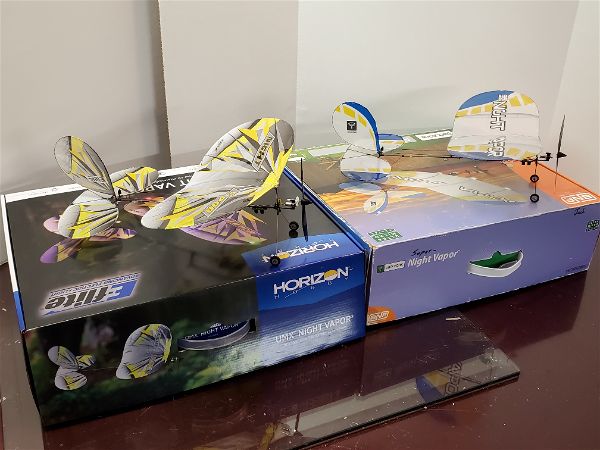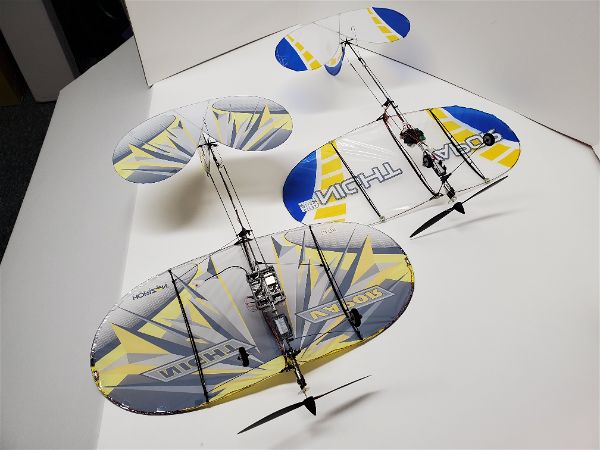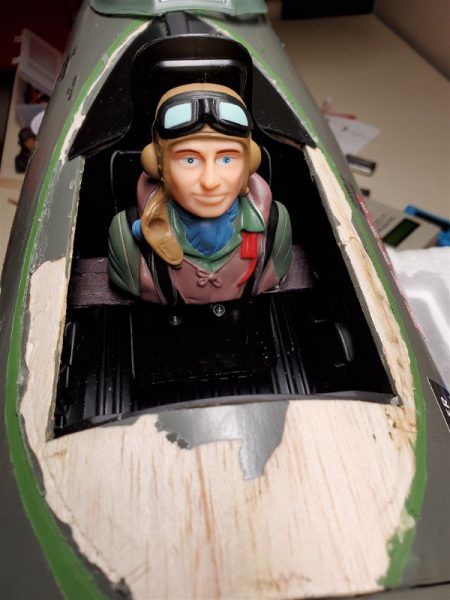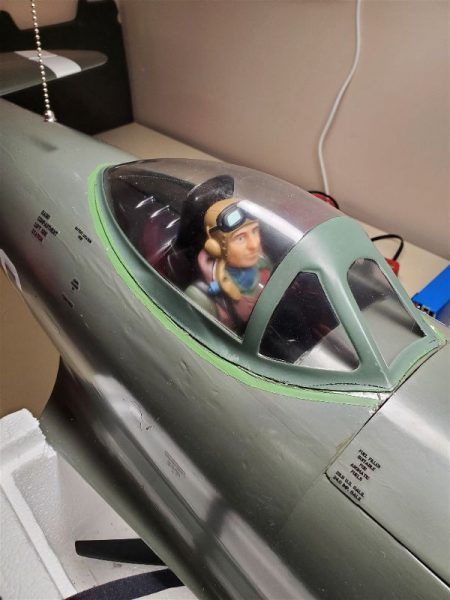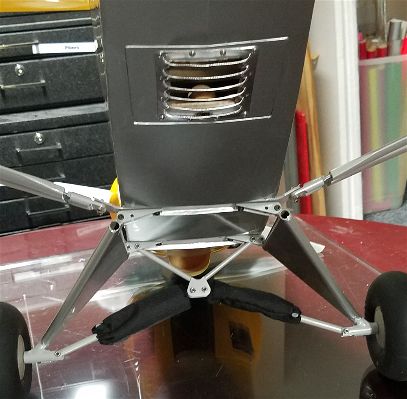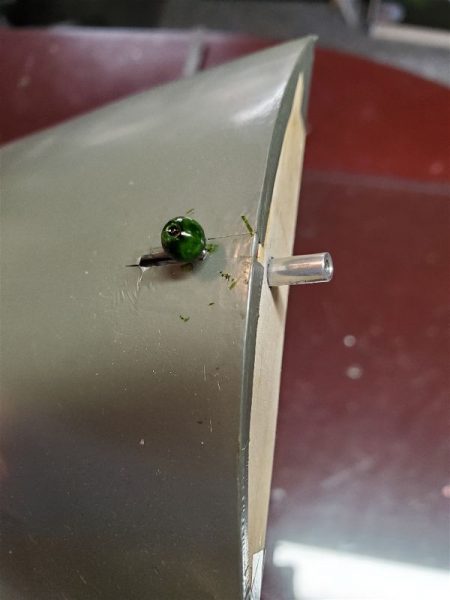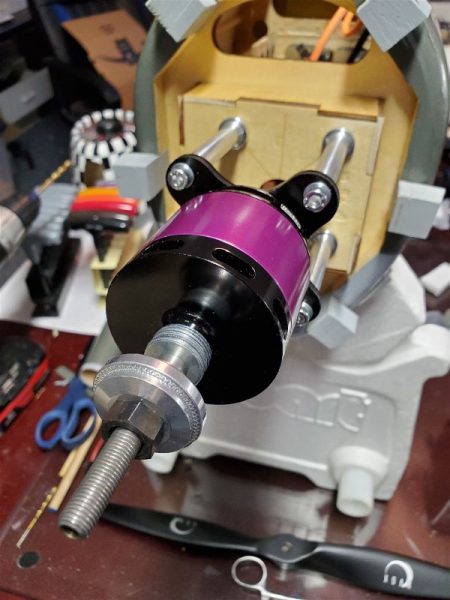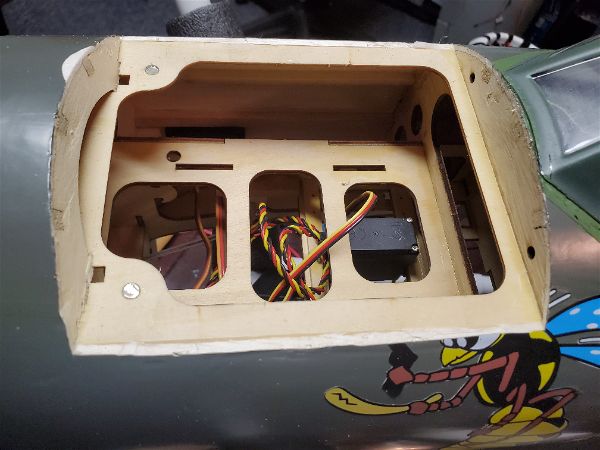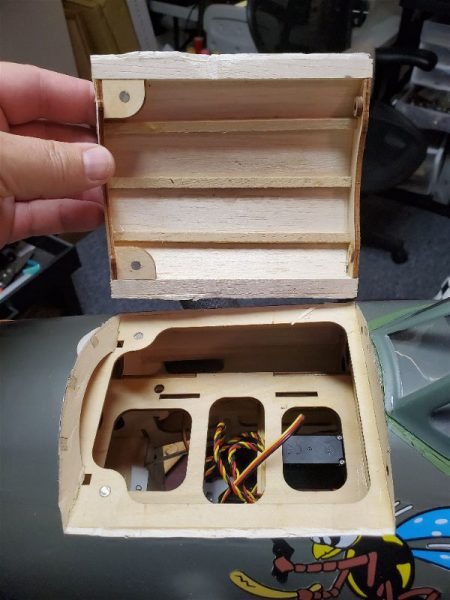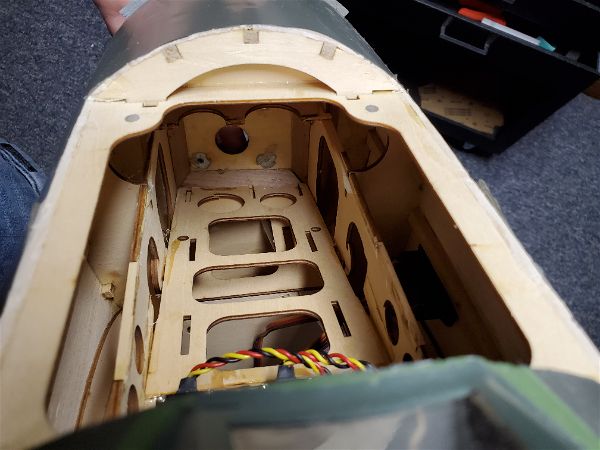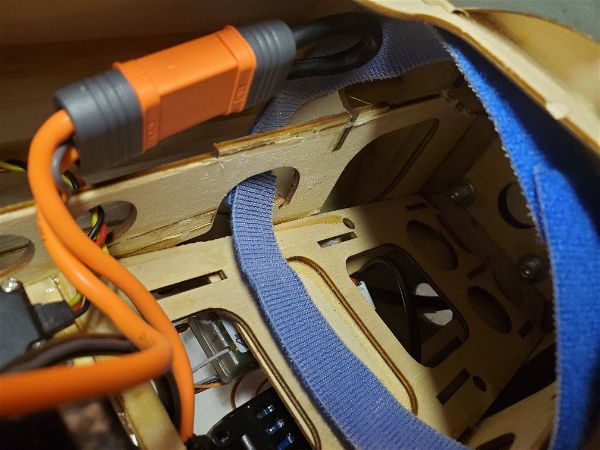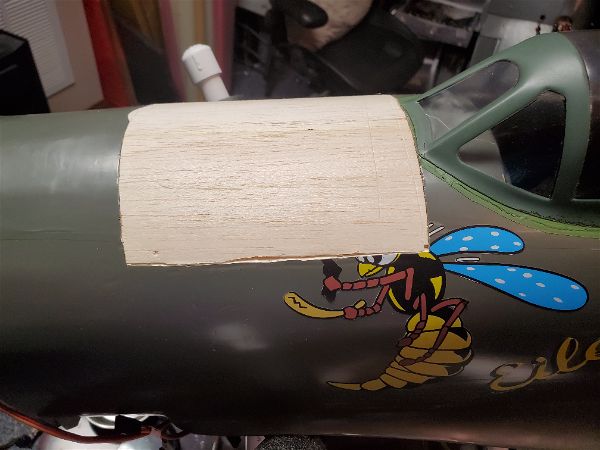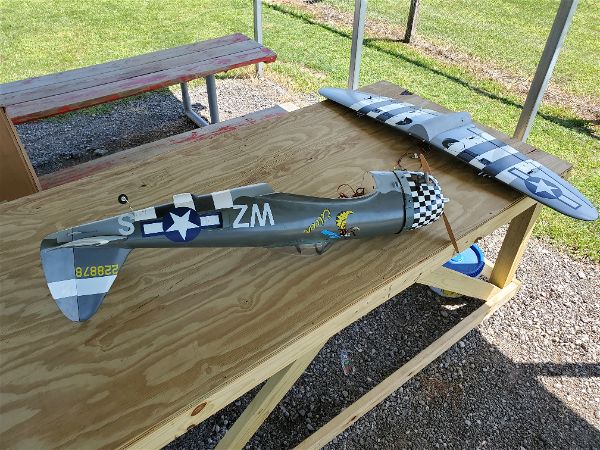In a previous post I reported on the demise of one of my favorite airplanes. The Top Flight P47 60-90 size ARF. The cause of that crash was that my Spektrum NX10 powered off mid-flight. This is disappointing as I have run the NX for several months and been extremely happy with it. The radio link to all of the planes as I flew them has always been rock solid… well at least while the radio was on!
After the crash, there was no doubt the radio had turned off unexpectedly. So began the investigation. I posted online about the failure and found just two folks who had claimed to have something similar occur and none had an occurrence during flight.
Thinking back, I honestly believe I may have seen it happen once on the bench shortly after first receiving the radio but at the time I was on very early code and was still learning to use the thing. As it happened I was working on a setup of an airplane and turned away for a few seconds to check something else behind me… an email arriving on my computer or whatever… and when I turned back the radio was off. I was so uncertain at the time as to the sequence of events that I passed it off as “perhaps I turned it off without thinking or realizing it when I got distracted”. I really couldn’t believe the radio turned itself off and I never saw it again through setting up 20 or so airplanes on it, multiple upgrades, template creations and many flights on many airplanes later I hadn’t seen it again so had forgotten about it and moved on… until it did it again and my plane crashed.
Online I got the usual advice and questions… folks trying to helpful asking about battery state, shake tests, testing the on/off switch, etc… and I did as many of them as I could justify or understand to no avail. I tried to jiggle the battery and connector particularly looking for an intermittent connection from the battery but it stayed on solid through all the shaking, wire twisting, switch tapping etc… that I could figure a way to inflict on it. In a few days I acceded to inevitable and sent it off for repair with fingers crossed. I spent years troubleshooting network for a living so I understand troubleshooting software and hardware systems like this when there is no no repeatable test case and no apparent error (other than a pile of wreckage) to be seen is an extremely trying task so I held little hope.
Now on the forums there are several very respected folks who monitor and comment on things and one is a gentleman who actually works on the software team for the NX series radios. Andy, like others, recommended sending it in and contacting them to discuss it. After the radio had been in their hands for a few days I reached out to him to try to figure out the easiest way to reach whomever was testing my radio. I knew that the best chance of getting a fix was to give them as much information as possible and the online form only allows so many characters so I gave Andy a complete description of the issue and asked for his advice on how to get this to the correct people. I also tried to impress on Andy that I really wanted a resolution beyond “no problem found” as I would never commit another airplane to flight with that radio unless we could determine a cause and apply an appropriate fix. I also explained that I have been a pretty loyal Spektrum user for many years now and have purchased many Spektrum radios and spend a fair amount of time helping my fellow club members get the most from their Spektrum radios. I really didn’t want this story to end with “…and that is why I have a $500 radio that sits in the corner and gathers dust”. Returning it to me in that state would be a waste of postage. Unsaleable and unusable…
Just a day later I got the notice that Horizon had sent me a shipment. I feared the worst… then came the invoice for $0 and a note that they had decided to simply replace my NX10 under warranty! Is this the best of all outcomes… no. It is however the best response that I think Horizon had available to them and I commend them for excellent service once again. I’m sure they tested my radio and had no way to recreate my issue. I ran it for months and only saw it happen (maybe) twice and the circumstances of each were different. I’m sure both Horizon and I are hoping it was simply a one in a million intermittent hardware issue and neither of us will ever hear anything like it again.
Horizon even went so far as to transfer all my models over to the new radio and upgrade the software to the very latest version. They also sent me a complete new kit… radio, battery, strap, etc… all the stuff that comes with a new in the box system…. even though I had only sent them my bare radio minus batteries etc… Of course they cannot replace my airplane. That is simply asking to much and lets face it; if you can’t handle an occasional loss of an airplane you probably need to get out of the hobby. They did more than I think is reasonable to expect in a bad situation and I appreciate that they are electing to take care of a loyal customer such as myself. I have experienced much less satisfactory service from companies who have gotten a lot more of my money but Horizon seems to get it right more often than not so I will continue to support them and spend my money with them as often as I can. Thanks to Andy and the rest of the team there. You guys do it right. Thanks again.
So I now have a brand new NX10 and am starting to get my planes bound to it and ready to go. My Timber X is back on the NX10 and flew well on the first couple of test flights…. It may be a bit before I put the 12S powered Aerobat or the 1/4 scale cub back in the sky with the new radio, but as my confidence in the radio recovers, I’ll be moving everything back over. Fingers crossed this will be the final chapter in this saga.



![ParkZone Night Vapor RTF [PKZU1100] | Airplanes - AMain ...](https://external-content.duckduckgo.com/iu/?u=https%3A%2F%2Fimages.amain.com%2Fimages%2Flarge%2Fpkz%2Fpkzu1100.jpg%3Fwidth%3D475&f=1&nofb=1)
